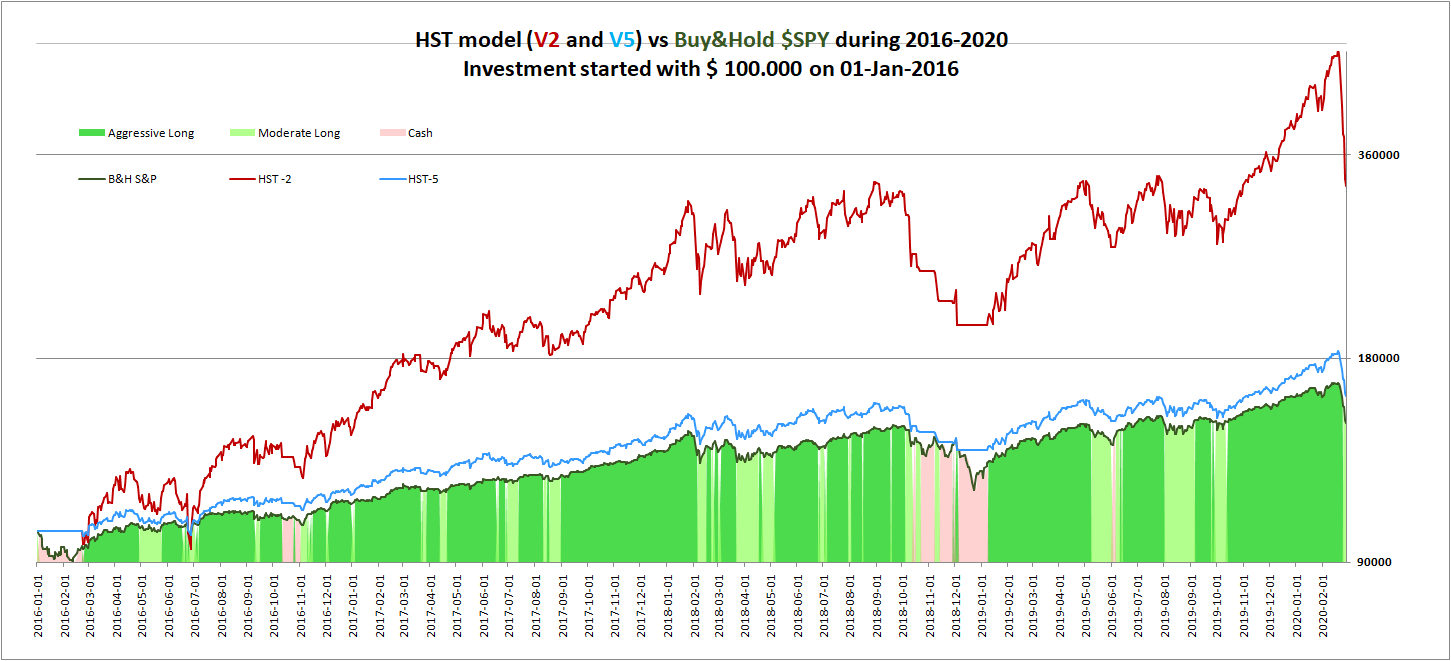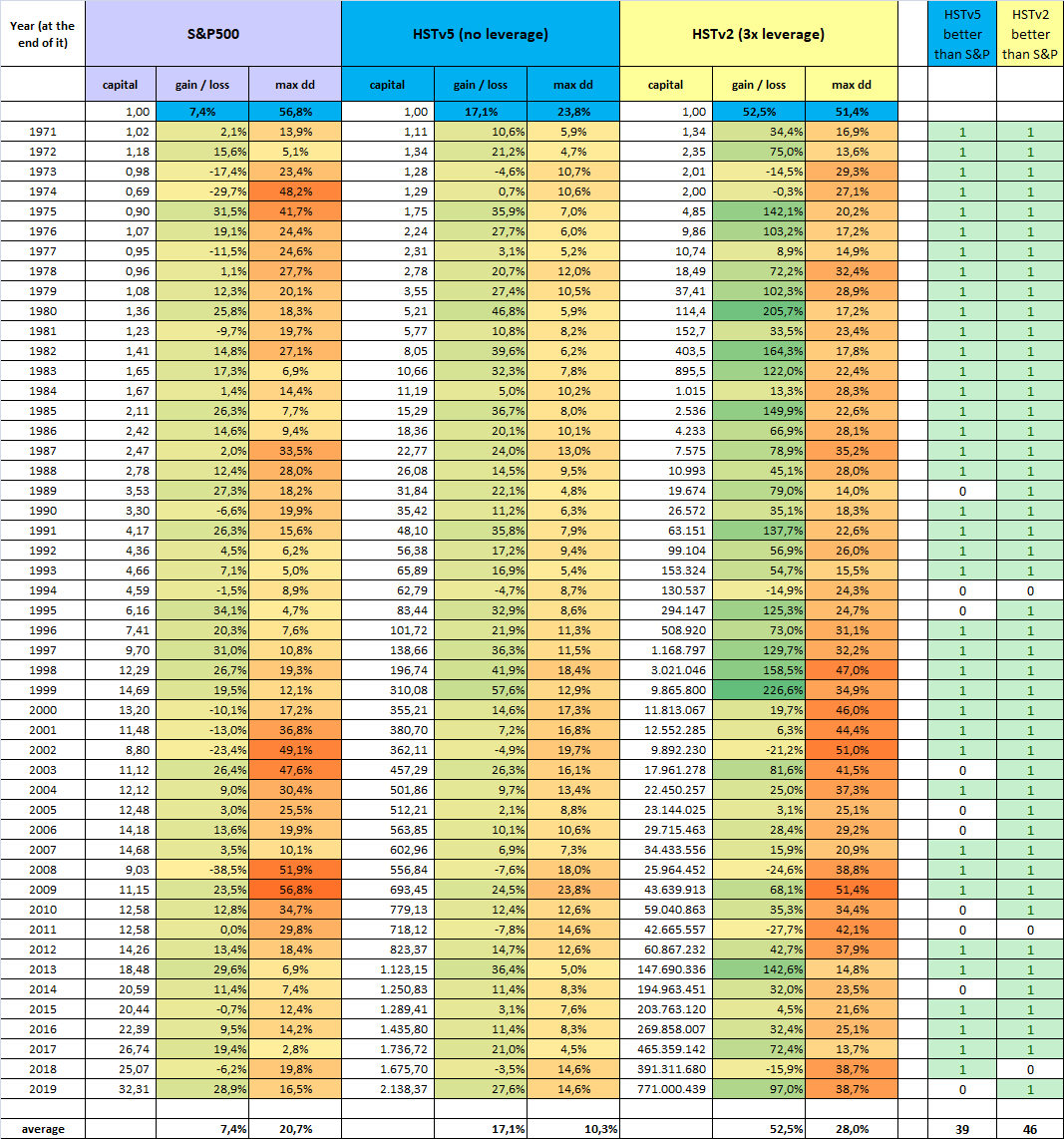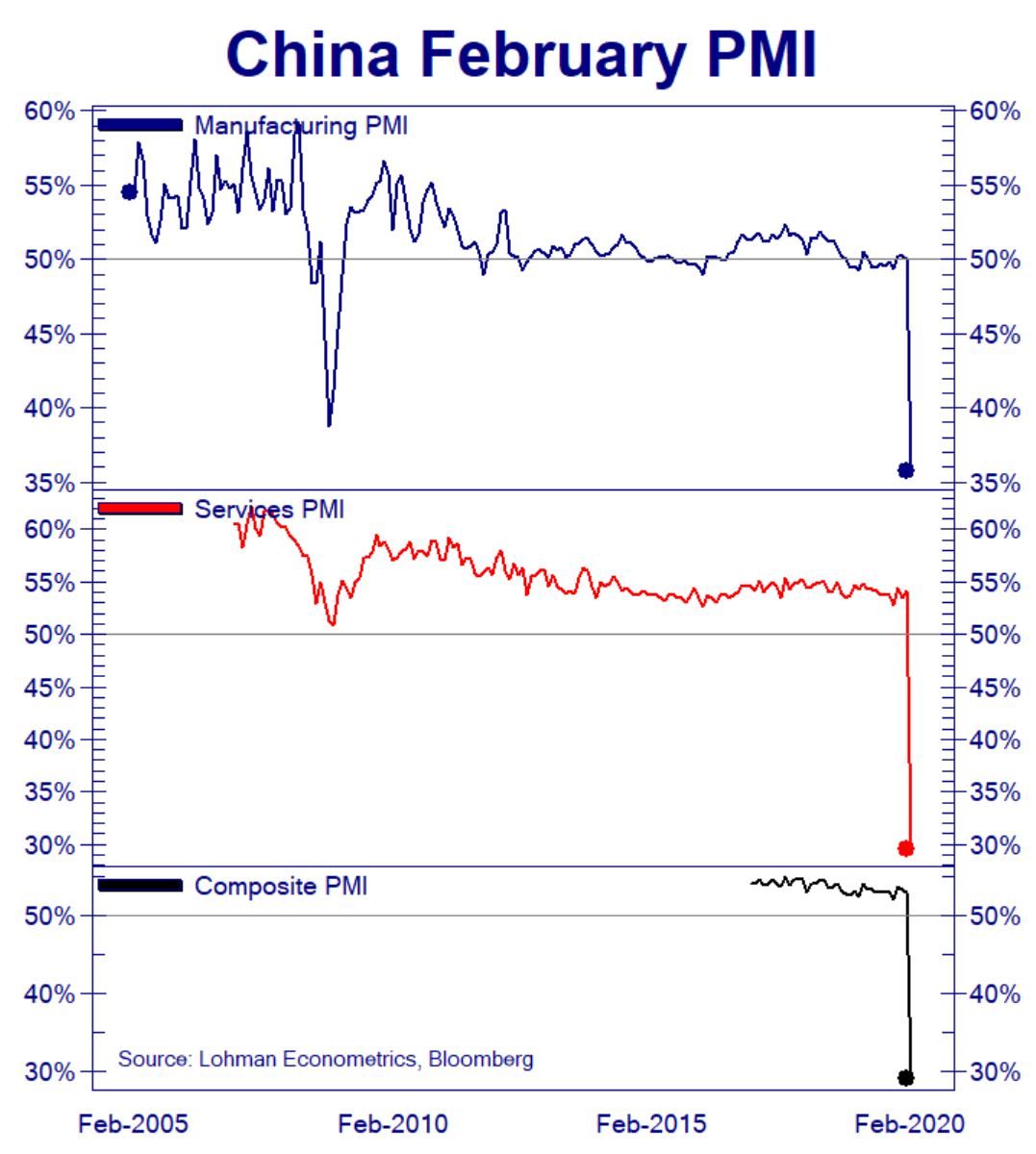Thougths after the crash
After one of the worst market’s week of last decades, all of us have already read several articles and comments about what happened.
I want to add my ideas, focusing on one specific condition that we share: we are long-term investors.
The stock markets falls on average by 10% once a year, by 20% every five years, by 30% once in a decade, rarely by 50% or more.
You may think that the aspect of this drop which is unprecedent is the speed, but we should remind what happened in October 1987.
So better to stay rational: the world is not ending, the market is not doomed, and so the investments made according the HST model. Let’s see the actual situation on 28-Feb-2020:

- The virtual investments made with HSTv2 are -18.5% since 31-Dec-19 and are suffering a drawdown of 37.3% from previous top (20-Feb-20)
- The virtual investments made with HSTv5 are -5.9% since 31-Dec-19 and are suffering a drawdown of 14.0% from previous top (20-Feb-20)
These are quite usual conditions which happened many times during the 49 years of backtest 1971-2019.
But we are long-term investors, and the HST model is designed to overperform the market on the long run. And we know that for 46 of 49 years, the HSTv2 overperformed the S&P500 index.

In the long run, it is the economy that drives the stock market, not excessive optimism (as we was seeing until a week ago), nor bad news about a single episode or local issue. The US economy is bound to the behavior of many millions of people and companies, let’s keep it in mind.
So we just need to be prepared in case this drop is the first wave of a longer, and harder bear market, and we want our model to push us in “protection mode” during this deleveraging time.
Now that the HST model has turned to CASH (the “protection mode”), let’s try to understand what could happen next.
Fundamentals
If we only consider the status of the US economy (which is represented by the Fundamental Indicator in the HST model), I would say that a “V” shaped recovery is the most likely scenario.
Prices of stocks were too stretched a week ago, and this week’s drop was a normal mean-reversion, from which another rally can start.
Indeed the fundamentals of our economy are in a quite good shape, and one could expect a positive 2020 year for financial markets after all, maybe at a slower pace than it has been during last months.
Fundamentals + CoVid19
BUT the CoVid19 contagion could change these premises, affecting the fundamental conditions of the US economy: see what has happened in China, given one month of contagion Here is the Chinese PMI now:

So, we must be careful: the contagion has not been considered yet in the fundamentals of US economy, and – if things go wrong – we could see a rapid deterioration of the macro data of the US soon enough.
That’s why given the actual conditions (the actual macro data + the risks due to virus), I would draw three different scenarios:
- The CoVi1d9 contagion will be contained soon, and the worldwide panic of last week will turn into a huge opportunity to go back in the market for a “V” shaped recovery.
In this case, our HST model will not re-enter into Long positions immediately, and I am ok with this (see next paragraph) - The CoVid19 will spread in some more countries, but consequences will be similar to a very hard flue, with more casualties than past years. Panic lasting for months will affect the economies of the world, but with proper contermeasures, governments will limit damages and no recession will start.
The markets’ recovery will be slower and longer. ** - The contagion will spread quickly worldwide and, eventhough umanity will surely win this battle, the panic will cause stops of production and deep changes in people’s habits; this will likely lead to a recession and a bear market for stocks. No one can now predict how long it will last. **
** Cases 2 and 3 are not really what we hope, but consider taht the HST model has proven to work better during bear markets (see article here). Not because it returned amazing yields on absolute terms, but because it avoided the very big losses of a massive decline of indexes, pushing investors to cash for most of the time.
How to operate from now (and how I will operate with personal investments)
Few days ago (Friday Feb-21) I was publishing my personal choise not to follow the HST model’s indication, because I was not comfortable with the coming news about the virus. I told that I was going to hardly reduce my positions, and I did. I’ve been very lucky in this case.
Now that the model is pointing Cash, I am re-starting following the model’s indications with my investments too.
But just because the model has now turned to Cash: the large intraday moves that we have seen during last days (Friday included, when the indexes gained 2% in few minutes) are not a favorable environment for long-term investors like me, like us.
I know that many are suggesting to re-enter now, because a rebound is very probable (rumors of rates cut by FED have driven Friday’s evening spike). I know that I might lose opportunities staying cash.
After sharp drops, strong recoveries happen very often, but many times they turn out to be temporary, and the markets re-visit bottoms again, or make new lows.
I won’t be comfortable in investing until I see a confirmation from the macro data, stating that the US fundamentals are not hit by this event.
So, in case the markets will revert since next Monday with strong gains, I will not enter immediately.
I will do only when the model will say so, and I also wanna see the macro data released during next week, before doing anything.
Members will be informed about these points in real time. Stay tuned.
Write to This email address is being protected from spambots. You need JavaScript enabled to view it. for more information.
